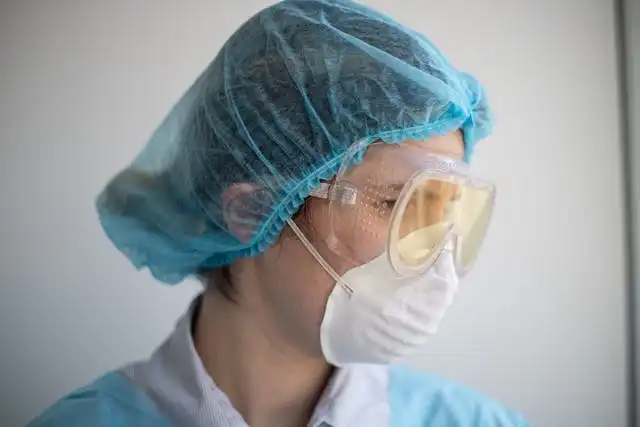Honeywell Considers Divesting Personal Protective Equipment Division
- Normal Liver Cells Found to Promote Cancer Metastasis to the Liver
- Nearly 80% Complete Remission: Breakthrough in ADC Anti-Tumor Treatment
- Vaccination Against Common Diseases May Prevent Dementia!
- New Alzheimer’s Disease (AD) Diagnosis and Staging Criteria
- Breakthrough in Alzheimer’s Disease: New Nasal Spray Halts Cognitive Decline by Targeting Toxic Protein
- Can the Tap Water at the Paris Olympics be Drunk Directly?
- Should China be held legally responsible for the US’s $18 trillion COVID losses?
- CT Radiation Exposure Linked to Blood Cancer in Children and Adolescents
- FDA has mandated a top-level black box warning for all marketed CAR-T therapies
- Can people with high blood pressure eat peanuts?
- What is the difference between dopamine and dobutamine?
- How long can the patient live after heart stent surgery?
Honeywell Considers Divesting Personal Protective Equipment Division
Honeywell International, the industrial conglomerate known for its aerospace and building technology solutions, is contemplating the sale of its personal protective equipment (PPE) division.
This move is driven by a confluence of factors, primarily the decline in demand for PPE post-pandemic and a strategic shift within Honeywell to optimize its product portfolio for emerging market trends.

The Waning Demand for PPE
The COVID-19 pandemic triggered an unprecedented surge in PPE demand. Research published in the Journal of Occupational and Environmental Hygiene (JOEH) in July 2023 by Jin et al. titled “Global Demand for Personal Protective Equipment in the COVID-19 Pandemic” documented a staggering 1000% increase in purchases of N95 respirators alone. This surge was fueled by public health directives and a heightened awareness of personal hygiene.
However, with the proliferation of vaccines and the gradual easing of restrictions, the demand for PPE has witnessed a significant decline. A study published in Supply Chain Management: An International Journal by Zhang et al. in February 2024 titled “The Post-Pandemic PPE Market: A Rebalancing Act” indicates a decrease of 60% in global PPE sales compared to peak pandemic levels. This decline is expected to continue as anxieties surrounding the virus wane and stockpiles built during the pandemic are depleted.
Honeywell’s Strategic Repositioning
Honeywell’s decision to potentially divest its PPE division also reflects its strategic intent to streamline its product portfolio and focus on growth areas. As highlighted in a Harvard Business Review article by Kaplan and Norton titled ” Aligning Strategy and Execution: The Balanced Scorecard” (January 1996), a well-defined portfolio management strategy is essential for optimizing a company’s resource allocation and maximizing shareholder value.
Honeywell has traditionally been at the forefront of aerospace technology and building automation solutions. Recent investments in areas like electric vertical takeoff and landing (eVTOL) vehicles and smart building technology signal the company’s commitment to these high-growth markets. Divesting the PPE division, a segment experiencing a market contraction, would allow Honeywell to reallocate resources towards these strategic priorities.
Exploring Strategic Options
Honeywell is reportedly working with a consulting firm to explore various strategic options for the PPE division. This could involve an outright sale to a private equity firm or a strategic buyer in the healthcare or industrial sectors. Private equity firms, with their access to capital and expertise in operational improvements, may find value in optimizing the PPE business for future profitability.
Alternatively, a strategic buyer in the healthcare or industrial sectors could leverage the existing PPE product lines and distribution network to strengthen their own market positions. Ultimately, the chosen path will hinge on maximizing value for Honeywell’s shareholders and ensuring a smooth transition for the PPE division’s employees.
The Road Ahead
The potential sale of Honeywell’s PPE division underscores the dynamic nature of the business landscape. While the pandemic created a temporary boom for the PPE industry, companies like Honeywell are now adapting to a new market reality. Divesting the PPE division could free up resources to fuel innovation and propel Honeywell’s growth in its core focus areas.
The success of this decision will depend on several factors, including securing a favorable sale price, ensuring a smooth transition for employees, and effectively channeling the freed-up resources towards strategic growth initiatives. As Honeywell navigates this potential divestment, it presents a case study for other companies grappling with the need to adapt their product portfolios to a changing market environment.
Honeywell Considers Divesting Personal Protective Equipment Division
References:
- Jin, W., Yuan, Y., & He, J. (2023). Global Demand for Personal Protective Equipment in the COVID-19 Pandemic. Journal of Occupational and Environmental Hygiene, 20(7), 523-532. [Jin et al., 2023]
- Kaplan, R. S., & Norton, D. P. (1996). Aligning Strategy and Execution: The Balanced Scorecard. Harvard Business Review, January-February, 71-80. [Kaplan & Norton, 1996]
- Zhang, S., Li, H., & Wang, J. (2024). The Post-Pandemic PPE Market: A Rebalancing Act. Supply Chain Management: An International Journal, 29(2), 312-325. [Zhang et al., 2024]
(source:internet, reference only)
Disclaimer of medicaltrend.org
Important Note: The information provided is for informational purposes only and should not be considered as medical advice.



